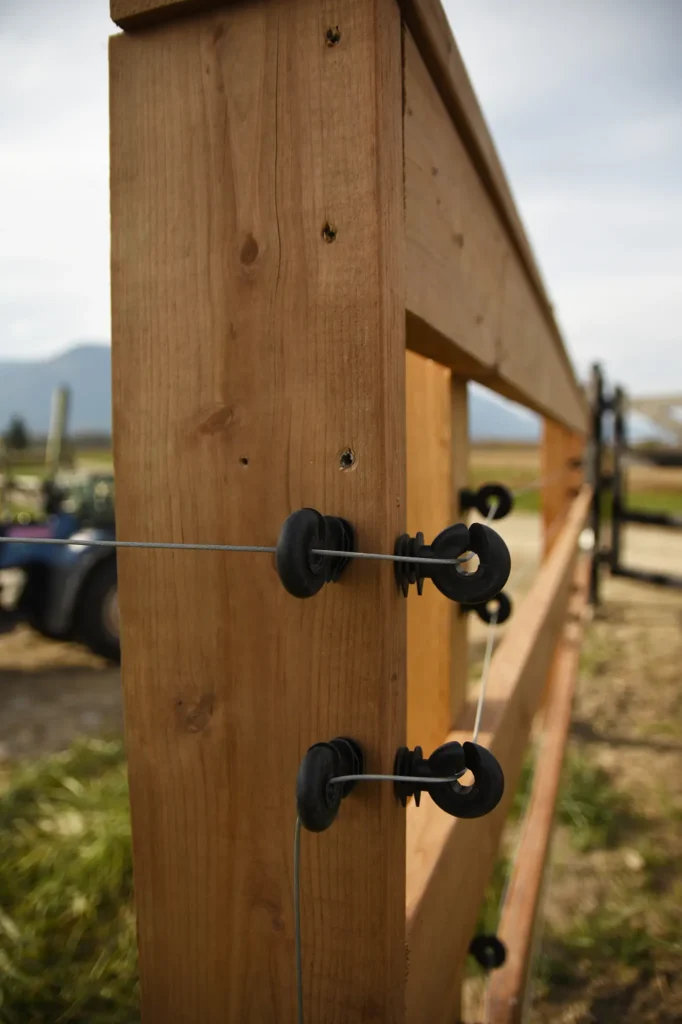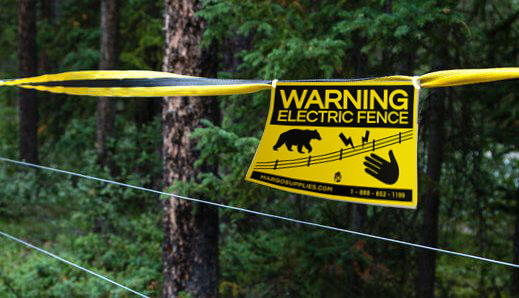Whenever people live, work, or play in bear country, they bring a multitude of bear attractants with them.
Bears are intelligent and curious animals, as well as opportunistic feeders with a strong sense of smell. Anything from beehives, to latrines, or used engine oil can cause an unwelcome visit from a hungry or curious bear. Additionally, once a bear has become conditioned to human food, they often continue to seek human food, posing a danger to themselves and people.
Luckily, there is a solution. Electric fencing is a non-lethal deterrent that protects attractants from bears, yet doesn’t cause any harm to the animal. The brief and unpleasant shock teaches bears to quickly avoid the area. Electric fencing can seem daunting but is actually fairly simple and easy to construct. There are many different materials and types of fencing to choose from, but as long as the fence follows these principles, it will keep bears out.
Voltage
The shock from an electric fence must be strong enough to penetrate the thick skin of a bear. Your fence needs to be putting out at least 7,000 Volts at any spot on the charged wires. Use to test your fence and find shorts.
Tight Wires
The wires must be tight enough to separate the heavy hair of a bear and deliver the shock right to the skin. Whatever wire material you use, it must be “guitar string tight”. This ensures bears receive a shock as soon as they touch the fence. Corner posts must be braced to ensure they can withstand the tension. Your fence will need to be occasionally tensioned.
No Obvious Weaknesses
The wires must be tight enough to separate the heavy hair of a bear and deliver the shock right to the skin. Whatever wire material you use, it must be “guitar string tight”. This ensures bears receive a shock as soon as they touch the fence. Corner posts must be braced to ensure they can withstand the tension. Your fence will need to be occasionally tensioned.
Grounding
Bears receive a shock by completing the electrical circuit from the hot (charged wire) and the energizer. Electricity returns through negative wires or the ground. Ground plates or rods should always be present in an electric fence. The amount of grounding required depends on the soil and size of a fence. As a general rule, you can never have too much grounding.
Wire Spacing
Wires must be spaced so bears cannot easily go under, through, or above your fence. Permanent fences should have a negative wire no more than 2” above the ground, this discourages digging.
Maintenance and Monitoring
The fence line should regularly be walked to ensure debris hasn’t gathered against the fence, bears have not begun digging, and that vegetation remains clear of the fence line. A well-built fence looks like a well-built fence. Wires are tight and spaced consistently, corners are braced, and the immediate fence line is kept clean of debris and vegetation. If all these principles are adhered to, the electric fence will stop bears. Some government organizations and conservation groups may even help you pay for electric fencing which will help keep yourself and property safe.

Introducing
Margo Fence Hub
We want to share our expertise with you. Margo Fence Hub is your resource for anything related to electric fencing. From planning to installation, we have compiled various educational resources to help you create an effective electric fence system.


